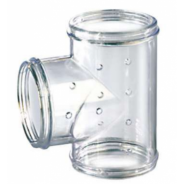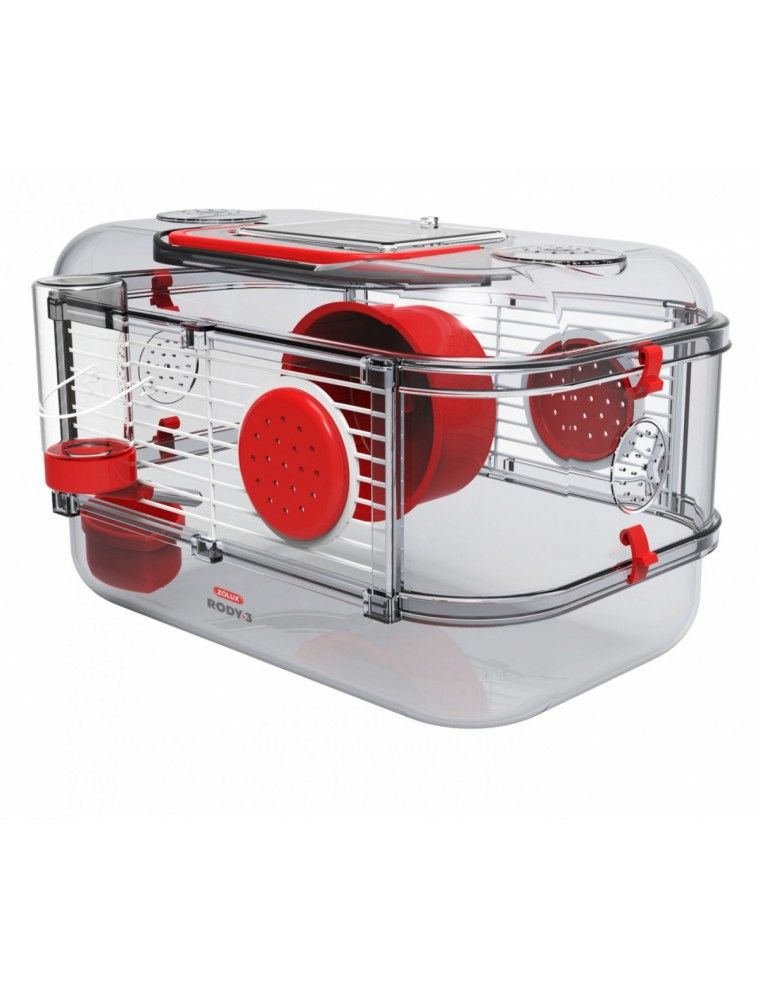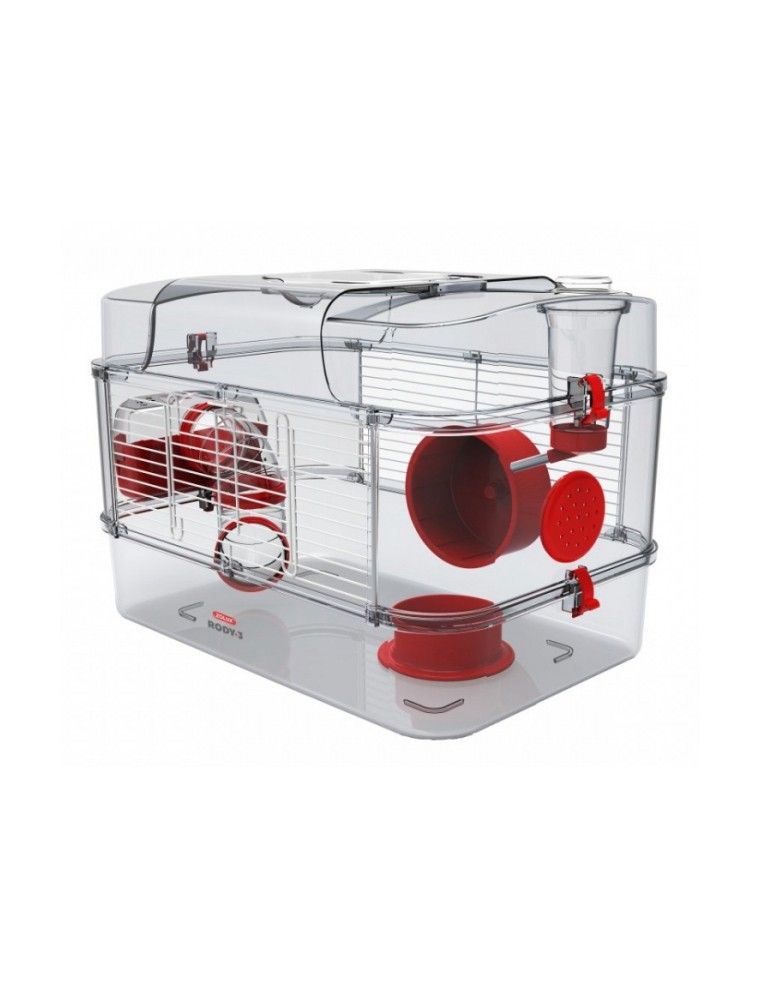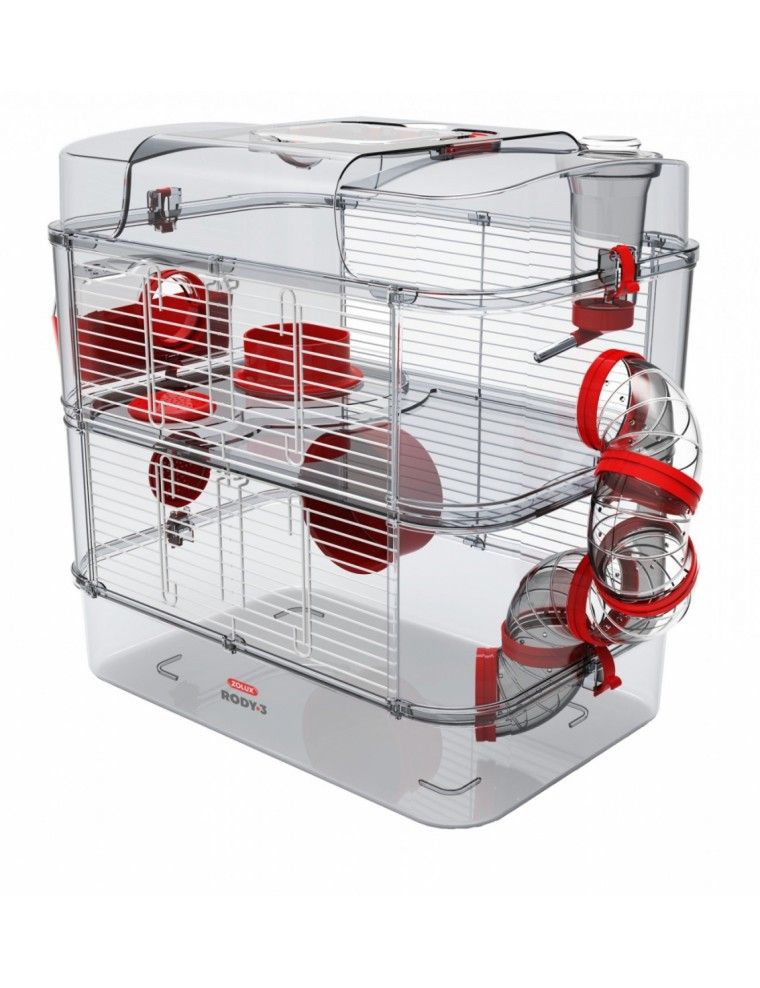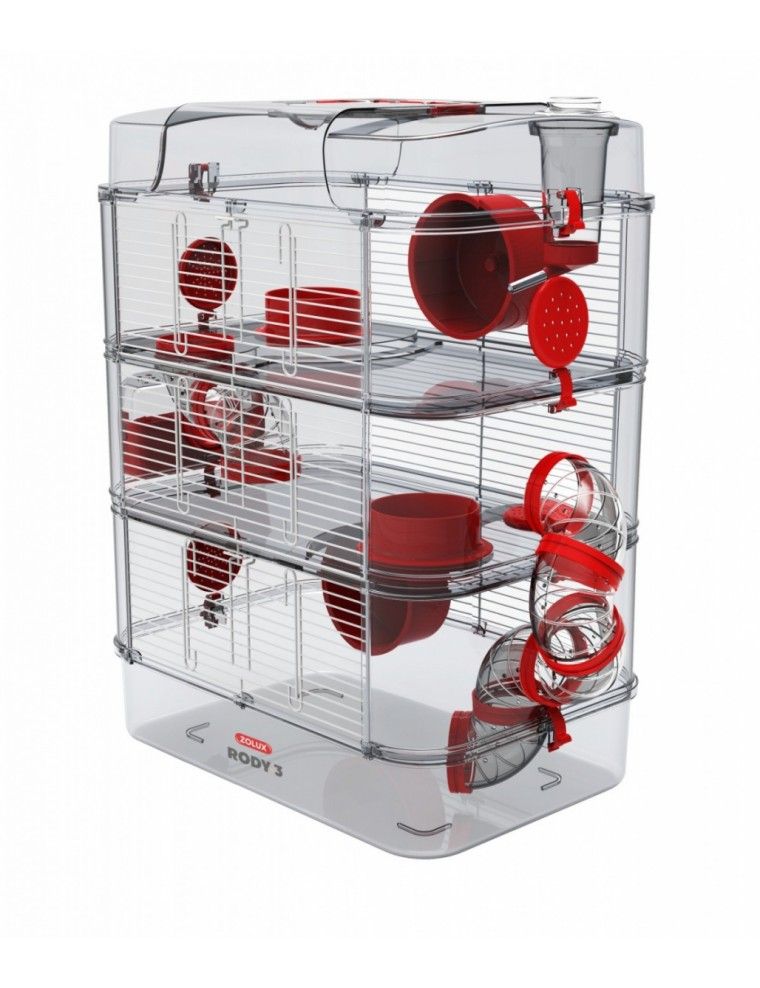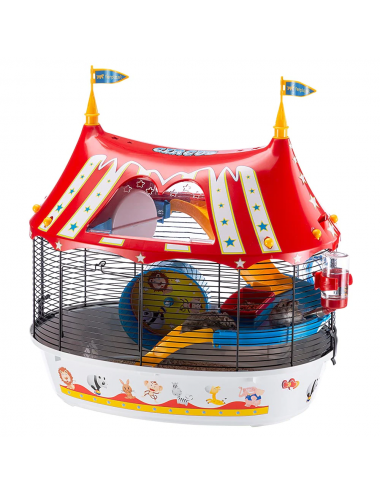- 1 in stock
Cage Hamster
A Comfortable Home for Every Hamster
At Le petit rodent, we know that finding the perfect cage for your hamster is crucial. It is his living space, his refuge, and the starting point for many adventures. Whether you are the proud owner of a lively and curious dwarf hamster or a more imposing Syrian hamster, we have a varied range of cages adapted to every need, combining comfort, safety, and entertainment.
Choosing the Ideal Cage: Size, Material, and Equipment
Choosing a hamster cage should not be taken lightly. The size of the cage should not only meet but ideally exceed the minimum floor space recommendations, providing your hamster with the space to explore, play and rest. The materials vary from the traditional bar to the innovative plexiglass, each having its advantages, from the point of view of ventilation to that of safety. Our cages are equipped to meet your hamster's basic needs, including wheels for running, shelter for hiding, and bottles for hydration, ensuring a convenient and comfortable all-in-one habitat.
The Importance of Layout and Location
Properly arranging your hamster's cage and choosing its location in your home are key steps to ensuring the well-being of your little companion. A thoughtful cage layout encourages physical and mental activity, with areas for feeding, spaces for playing, and nooks for resting. Positioning the cage in a quiet area, away from drafts and sources of direct heat, also contributes to the comfort of your hamster, providing it with a peaceful environment in which to live.
Cleaning and Maintenance: Keys to a Healthy Home
Keeping your hamster's cage clean is essential for its health. Regular cleaning, combined with the use of suitable litter, facilitates maintenance and ensures a healthy environment. Our simple and ecological maintenance tips will help you easily maintain the cleanliness of the cage, while minimizing inconvenience for you and your animal. In addition, choosing a cage that is easy to clean, with removable accessories, will make this task less arduous.
A Living Space Adapted to Each Hamster
At Le petit rodent, our goal is to provide you with a selection of cages that not only meet but exceed the needs of your hamster. Whether it is a model with pipes for dwarf hamsters or a large ventilated cage for Syrian hamsters, each product is chosen to offer the best to your companion. We guide you through the different options, ensuring you find the perfect cage to make your hamster's habitat a true home.
Cage
A Comfortable Home for Every Hamster
At Le petit rodent, we know that finding the perfect cage for your hamster is crucial. It is his living space, his refuge, and the starting point for many adventures. Whether you are the proud owner of a lively and curious dwarf hamster or a more imposing Syrian hamster, we have a varied range of cages adapted to every need, combining comfort, safety, and entertainment.
Choosing the Ideal Cage: Size, Material, and Equipment
Choosing a hamster cage should not be taken lightly. The size of the cage should not only meet but ideally exceed the minimum floor space recommendations, providing your hamster with the space to explore, play and rest. The materials vary from the traditional bar to the innovative plexiglass, each having its advantages, from the point of view of ventilation to that of safety. Our cages are equipped to meet your hamster's basic needs, including wheels for running, shelter for hiding, and bottles for hydration, ensuring a convenient and comfortable all-in-one habitat.
The Importance of Layout and Location
Properly arranging your hamster's cage and choosing its location in your home are key steps to ensuring the well-being of your little companion. A thoughtful cage layout encourages physical and mental activity, with areas for feeding, spaces for playing, and nooks for resting. Positioning the cage in a quiet area, away from drafts and sources of direct heat, also contributes to the comfort of your hamster, providing it with a peaceful environment in which to live.
Cleaning and Maintenance: Keys to a Healthy Home
Keeping your hamster's cage clean is essential for its health. Regular cleaning, combined with the use of suitable litter, facilitates maintenance and ensures a healthy environment. Our simple and ecological maintenance tips will help you easily maintain the cleanliness of the cage, while minimizing inconvenience for you and your animal. In addition, choosing a cage that is easy to clean, with removable accessories, will make this task less arduous.
A Living Space Adapted to Each Hamster
At Le petit rodent, our goal is to provide you with a selection of cages that not only meet but exceed the needs of your hamster. Whether it is a model with pipes for dwarf hamsters or a large ventilated cage for Syrian hamsters, each product is chosen to offer the best to your companion. We guide you through the different options, ensuring you find the perfect cage to make your hamster's habitat a true home.
- 1 in stock
- 1 in stock
- 1 in stock
- in replenishment
- 1 in stock
Questions / Réponses
Une cage pour hamster doit avoir une surface d'au moins 0,4 mètre carré, mais plus grande est toujours préférable pour offrir assez d'espace pour l'exercice et l'exploration. Pour les hamsters syriens, une cage encore plus spacieuse est recommandée en raison de leur plus grande taille.
Les cages à barreaux en métal avec un fond solide sont idéales car elles offrent une bonne ventilation et permettent au hamster de grimper. Les aquariums ou terrariums peuvent aussi être utilisés, mais assurez-vous qu'ils soient bien ventilés pour éviter l'accumulation d'humidité.
Oui, les cages à plusieurs niveaux peuvent fournir une stimulation supplémentaire et plus d'espace pour explorer. Assurez-vous cependant que les rampes et plateformes soient sécuritaires pour éviter les chutes.
Incluez une roue d'exercice, des cachettes, des jouets à mâcher, et des tunnels. Utilisez une litière absorbante et non toxique au fond de la cage. Assurez-vous également que la cage soit équipée d'un biberon d'eau et d'une gamelle pour la nourriture.
Effectuez un nettoyage partiel chaque semaine pour enlever les déchets et une fois par mois, un nettoyage complet en lavant la cage avec un détergent doux et en changeant entièrement la litière.
Cela dépend de l'espèce. Les hamsters syriens sont solitaires et doivent vivre seuls pour éviter les combats. Les hamsters nains peuvent vivre en pairs ou en petits groupes s'ils sont introduits correctement et dès un jeune âge, mais surveillez-les pour des signes d'agressivité.
Préférez les litières à base de papier recyclé, de chanvre, ou de copeaux de bois sans poussière (évitez le cèdre et le pin). Ces matériaux sont absorbants et moins susceptibles de causer des problèmes respiratoires.
Choisissez une cage avec des barreaux en métal ou assurez-vous que le couvercle de votre aquarium ou terrarium offre une bonne circulation de l'air. Évitez de placer la cage directement sous la lumière du soleil ou dans des zones de courants d'air.
Les cages en plastique sont sécuritaires tant qu'elles fournissent une ventilation adéquate. Cependant, certains hamsters peuvent ronger le plastique, ce qui pourrait poser un risque pour leur santé. Assurez-vous que le matériau est résistant et surveillez tout signe de rongement.
Placez la cage dans un endroit calme, à l'abri des courants d'air et de la lumière directe du soleil, mais où le hamster peut toujours interagir avec la famille. Évitez les zones bruyantes qui pourraient stresser votre animal.
